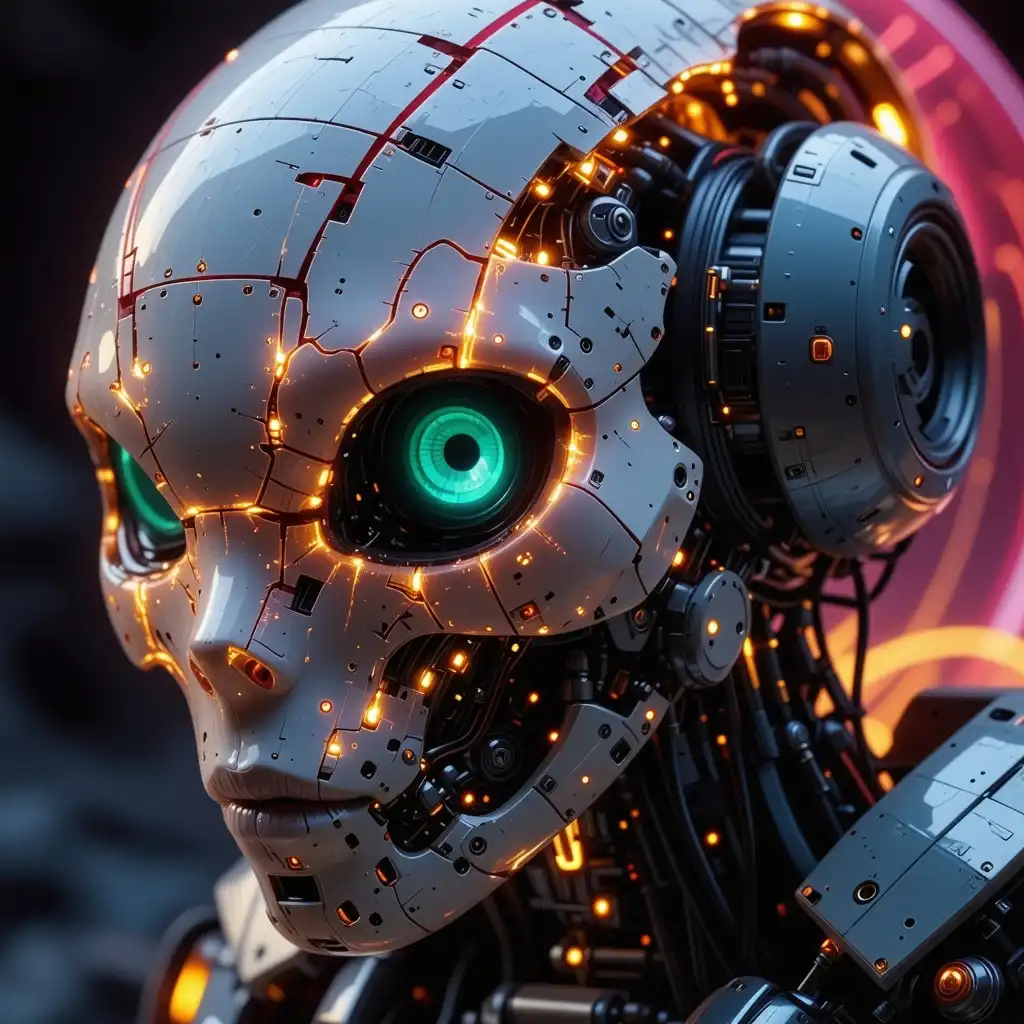图片提示词prompt
An extreme macro close-up of a translucent robotic head resembling a serpent, its hollow, glass-like surface revealing the decayed remnants of its inner mechanisms. The lifelike scales, once vibrant, now shift with eerie, fading neon tones of pink, red, yellow, and green, bleeding into one another like the last embers of a dying machine. Subsurface scattering (SSS) effects illuminate fractured wiring beneath the surface, glowing faintly with irregular pulses, as if struggling to cling to life.
The lighting is dim and cold, with harsh backlight casting long shadows through the translucent material, emphasizing the cracks and imperfections in its once-flawless design. The shallow depth of field blurs the desolate backdrop, littered with rusted metal fragments and faintly glowing debris, adding to the sense of abandonment.
The robotic head is crowned with a weathered metal hood, its surface pitted and scarred as if corroded by years of acid rain. A central circular aperture, cracked and flickering with an unstable turquoise light, dominates the frame. Etched into the hood are intricate filigree patterns, their coppery glow dim and irregular, like the fading heartbeat of an ancient, forgotten machine. These shifting patterns pulse faintly, evoking an organic-mechanical aesthetic—a haunting relic of a future consumed by entropy. in the style of ck-ncr,
一个类似于蛇的半透明机器人头部的极端宏观特写,其中空的玻璃状表面揭示了其内部机制的腐烂残留物。栩栩如生的鳞片曾经充满活力,现在以令人毛骨悚然的粉红色,红色,黄色和绿色的霓虹灯色调移动,像垂死的机器的最后余烬一样相互渗透。次表面散射 (SSS) 效应照亮表面下的断裂布线









